
- Subject:
- Life Science
- Physical Science
- Material Type:
- Module
- Author:
- Erin Owens
- Date Added:
- 05/11/2021


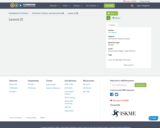
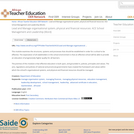
This module examines the structures, systems and processes that should be established in order for a school to be effective. The expectation of all stakeholders in the school environment is that an effective school will be able to provide an education of progressively higher quality for all learners. The premise of this module is that effective education is built upon, and grounded in, policies, principles and values. The acts, regulations and policies of national and provincial governments have created the framework and values within which the schools organisational systems, and physical and financial resources should be managed.

This resource is a video abstract of a research paper created by Research Square on behalf of its authors. It provides a synopsis that's easy to understand, and can be used to introduce the topics it covers to students, researchers, and the general public. The video's transcript is also provided in full, with a portion provided below for preview:
"These metallic pillars are helping researchers understand the physical properties of biological cells like never before. Individually controlled electronically, they’re able to stop cells in their tracks and make them spin using dielectrophoretic forces. This microscopic line dance provides bioelectric information that could help researchers analyze unmarked single cells on a chip—all without handling them directly. The so-called electrorotation system works like this. Cells suspended in a fluid flow through the device at a given rate. With no electric field applied, the cells simply slip past the entrance and exit electrodes. But applying a high-voltage signal to the exit posts creates an impenetrable force field. Applying the same signal at the entrance completes the trap: no cells in and no cells out. One at a time, the system captures up to 39 cells. Once all the traps are filled, a rotational signal is mixed in with the trapping signal..."
The rest of the transcript, along with a link to the research itself, is available on the resource itself.
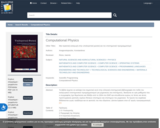
Το βιβλίο αυτό είναι μια εισαγωγή στις υπολογιστικές μεθόδους που χρησιμοποιούνται στη φυσική και άλλα επιστημονικά πεδία. Απευθύνεται σε κοινό που έχει ήδη εκτεθεί σε μαθήματα γενικής φυσικής που διδάσκονται στα δύο πρώτα έτη πανεπιστημιακών τμημάτων θετικών επιστημών και επιστημών του μηχανικού. Δεν υποθέτει κανένα υπόβαθρο αριθμητικής ανάλυσης, προγραμματισμού ή χρήσης υπολογιστή και παρουσιάζει ό,τι είναι απαραίτητο για την επίλυση των προβλημάτων που παρουσιάζονται στο βιβλίο. Μπορεί να χρησιμοποιηθεί ως κύριο σύγγραμμα σε εισαγωγικά μαθήματα υπολογιστικής φυσικής και επιστημονικού προγραμματισμού.
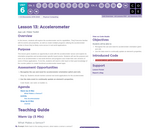
In this lesson, students will explore the accelerometer and its capabilities. They’ll become familiar with its events and properties, as well as create multiple programs utilizing the accelerometer similar to those they’ve likely come across in real world applications.
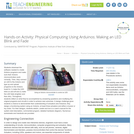
Students download the software needed to create Arduino programs and make sure their Arduino microcontrollers work correctly. Then, they connect an LED to the Arduino and type up and upload programs to the Arduino board to 1) make the LED blink on and off and 2) make the LED fade (brighten and then dim). Throughout, students reflect on what they've accomplished by answering questions and modifying the original programs and circuits in order to achieve new outcomes. A design challenge gives students a chance to demonstrate their understanding of actuators and Arduinos; they design a functioning system using an Arduino, at least three actuators and either a buzzer or toy motor. For their designs, students sketch, create and turn in a user's manual for the system (text description, commented program, detailed hardware diagram). Numerous worksheets and handouts are provided.
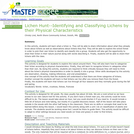
This activity is a guided inquiry where students will find their own lichen and classify it into one of three categories. They will collect, analyze, and present their finding to the class.
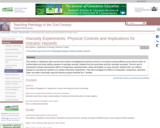
Teaching students about viscosity is easy, effective and fun. It is a topic that is conducive to a range of teaching and learning styles, and allows for the integration of theory, experiments, and calculations. During the course of this exercise, students are required to make predictions about the outcomes of experiments, quantitatively document the results of their experiments, calculate viscosities using the Jeffreys equation (Jeffreys 1925; Nichols 1939; Cas and Wright 1987), and extrapolate the concepts learned from their laboratory results to natural conditions appropriate for silicate magmas and lavas. Students are also introduced to Ken Wohletz's freeware program MAGMA (no longer available), which allows them to determine viscosities for magma and lava compositions, and are required to do some simple graphical analysis of the effects of composition, dissolved H2O, and % solids on magma and lava viscosity using the MAGMA calculations. Viscosity is important for students at all levels of earth science to understand because it is a critical control on morphologies of volcanoes, velocities of lava flows, eruptive styles (effusive versus explosive), and ascent velocities of magmas within the earth.
The objectives of the lab are for students to:
learn about the rheological property called viscosity and some of the factors that affect it;
think about and discuss ways in which viscosity controls styles of eruptions and relates to volcanic hazards; and
practice quantitative skills.
I have used the viscosity experiments as a classroom demonstration in introductory geology courses, as one part of a more extensive lab on volcanoes in introductory geology courses, and as a more intensive viscosity lab for introductory petrology courses. Generally the students do this exercise after they have had at least one introductory lecture on volcanoes, so that they are familiar with several basic terms, including viscosity, lava, magma, as well as some basic igneous rock terms (basalt, andesite, rhyolite). Over the fives years that I have been using the experiments, students at all levels have commented that the experiments are some of the most memorable, interesting and fun parts of my courses. I would welcome any direct student or instructor feedback for improvements or additions to the exercises (edwardsb AT dickinson.edu).
(Note: this resource was added to OER Commons as part of a batch upload of over 2,200 records. If you notice an issue with the quality of the metadata, please let us know by using the 'report' button and we will flag it for consideration.)

The Central American volcanic arc displays large arc-parallel variations in chemical composition that yield important clues concerning the complex origin of magmas in subduction zones. In this exercise, students use data compiled for the NSF MARGINS program to compare heights, volumes, and whole-rock compositions of 39 Quaternary volcanic centers along the Central American arc, together with crustal thicknesses, to assess the possible sources of the magmas and the petrologic processes that have modified them prior to eruption.
(Note: this resource was added to OER Commons as part of a batch upload of over 2,200 records. If you notice an issue with the quality of the metadata, please let us know by using the 'report' button and we will flag it for consideration.)

This is a quiz designed to accompany the online simulation "Forces and Motion," which is part of the PhET Interactive Simulations of the University of Colorado Boulder.The quiz was designed for Canvas. Each question includes instructions for an action the student is to complete in the online simulation, followed by a multiple choice question.
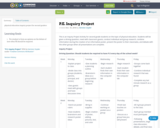
physical education inquiry project for second graders
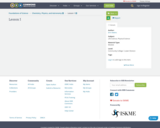
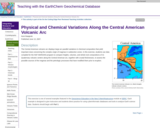
The Central American volcanic arc displays large arc-parallel variations in chemical composition that yield important clues concerning the complex origin of magmas in subduction zones. In this exercise, students use data compiled for the NSF MARGINS program to compare heights, volumes, and whole-rock compositions of 41 Quaternary volcanic centers along the Central American arc, together with crustal thicknesses, to assess the possible sources of the magmas and the petrologic processes that have modified them prior to eruption.
(Note: this resource was added to OER Commons as part of a batch upload of over 2,200 records. If you notice an issue with the quality of the metadata, please let us know by using the 'report' button and we will flag it for consideration.)

The first video segment presents a canonical mathematical example from quantitative biology, in which mRNA is transcribed from a gene sequence, and protein is translated from mRNA. The second segment uses eigenvector-eigenvalue analysis to sketch the trajectories of the system in a phase portrait. Finally, the third segment generalizes the linear stability analysis used to study this example.
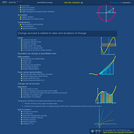
The purpose of the first part of this video is to introduce the idea of summation and its notation using the Greek-letter Sigma. We practice working with sums by using Gauss's summation trick. In the second part of the video, we study examples of infinite series, one which converges to a finite number (geometric series), and one which diverges (harmonic series).
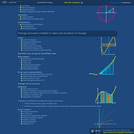
To continue our discussion of derivatives from preceding videos, we explain that the second derivative represents curvature. By combining knowledge of multiple derivatives, we can sometimes create Taylor series, which are local approximations of functions. As an example, we Taylor-expand sinusoidal functions and then use the results to iteratively approximate pi.
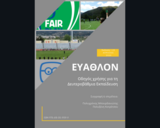
Students' moral education appears increasingly necessary in our days, as the cultural and moral frame of modern life has compressed moral values like respect, personal and social responsibility, fairness, solidarity, tolerance, acceptance of diversity. The development of moral-active citizen is considered as main objective in policies of European Union and United Nations Organization, so that intense moral decline phenomena of our days could be faced. Socrates argued that “Virtue is teachable”, since parameters of moral character such as empathy, collaboration culture, problem solving skills are being developed throughout all our lifespam.
Sport engagement often emphasizes in cognitive and kinetic skills overlooking social, sentimental and psychological skills. Thus, just participating in sport does not necessarily promote moral development. Consequently, sport programs have to incorporate strategies directed at the development of moral values and moral reasoning.
Social scientists argue that, it is not possible to develop personal and social responsibility in students, just by oral instructions. Only “learn-by-doing” methods could help students transfer the developed skills, in different contexts of their lives.
Physical Education has been an outstanding setting for applying moral development strategies, due to the opportunities it provides for reflection, role playing, responsibility building, solidarity and collaboration culture. For this reason, over the past two decades, moral development programs were applied in Physical Education, such as Teaching Personal and Social Responsibility Model (T.P.S.R.) and the Sport Education Model (S.E.M.). Solidarity, honesty, fairness, responsibility, collaboration, respect of self and others, are moral values that should be strengthened during a school PE session.
“Evathlon” could be described as an educational program aiming in developing those moral values, in the context of school Physical Education. By triggering students’ critical thinking and critical judgment on earlier experiences, as well as by engaging them in specifically planned sport experiences, morality development is sought.
Program’s main objective is to have a positive impact on students’ social behavior during sport events, as well as in other contexts of their social life. Educative interventions in the setting of school football events have been planned to gradually develop K7 to K9 students’ morality.
Being based on social cognitive theory and on structural learning theory, the interventions combine above-mentioned theories to provide better social interaction and develop moral reasoning in an optimal way. Students are being inspired and motivated by their “sport role models" using interactive tools (e.g. videos, word
clouds, quizzes, comics) in asynchronous e-learning environment (LMS Edmodo) and then during school football events they experience in practice respect in rules, interact, develop social skills, confront moral dilemma situations and cultivate their moral reasoning.
Physical Education and school sport events constitute ideal environments for experiential and moral dilemma situations, under conditions of safe and moderate competition. Moreover, football is a sport of moderate bodily contact, offering lots of occasions for social interactions that increase the potential of positive, as well as antisocial and illegitimate behaviors.
'Evathlon' innovates, as by using blended learning techniques, gives students a central role in the educational process, developing their experiences and facilitating their team-based approach to knowledge. Sport role models and specially designed “learn-by-doing” experiences promote the adoption of desirable fair play
behaviors.
Decisive for fulfilling the aim of Evathlon sport program, is the carefully designed educational process, which actively involves students in all stages, thus strengthening their engagement in it, providing opportunities for critical reflection, role playing, problem solving and adoption of “desirable behaviors”.
At the same time, program planning permits its feasible adjustment in the context of any individual or team sport. Its positive effect in the improvement of student social behavior is expected to be significant, confirming the effectiveness of the intervention and prompting its extensive adaptation in other teaching areas that have been outlined for school Physical Education.